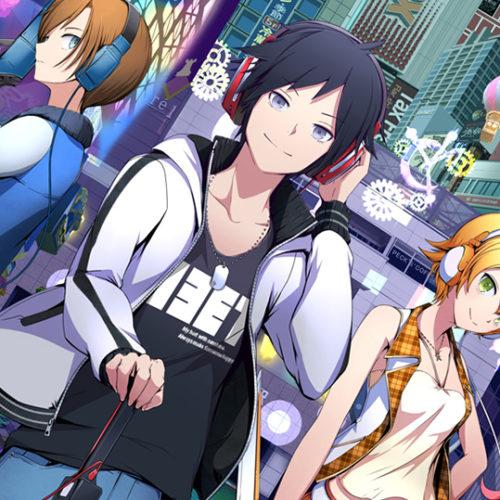Tales from Akihabara.
Save from the fact that I didn’t get the joke of “Akiba’s Trip” being a play on words with how the game is about stripping vampires of their clothes defeat them, I couldn’t find one kind thing to say about that game.
From its dated visuals and uninteresting story, to the mind numbingly dull gameplay, I really didn’t like anything about Akiba’s Trip. In fact, it ended up being a one day rental which I was eager to return and haven’t really thought of it since. However, when I told that its spiritual successor, “Akiba’s Beat” was a whole other beast entirely with Tales inspired combat and a take on a groundhogs day set in Akihabara, I thought it might be worth a shot.

Akihabara is recreated once more, this time with much less load screens.
MSRP: $49.99
Platform: PS4
Voice Selection: ENG Only
Length: 30~ hours
Asahi is a happy-go-lucky loser who is enjoying life, lazing about playing games and sleeping well after noon without a care in the world. One day, he notices some odd occurrences and encounters a spunky girl that proclaims that they are chosen heroes that must destroy delusions from encroaching in the real world. Trapped in a never-ending loop of one seemingly ordinary Sunday, he reluctantly gets pulled along to solve the mystery of this endless Sunday.
If I were to put the various story elements in a bullet point, it would share striking similarities to the Persona series of games, specifically 4-5. The need to go into special worlds tailored to specific individuals and the manifestations of supernatural abilities that are limited to use in those world are present in both games. Still, it’s not as though Persona or any game has a stranglehold on story elements so I was quick to overlook the various similarities. In fact, even though I assumed much of what would happen plot-wise, there were still some fun surprising twists and turns along with way.
What was hard to overlook were the various gameplay mechanics that felt ripped straight from Bandai Namco’s Tales series. The combat in its essence felt like a worse version of an earlier Tales games to the letter with active time battles with the use of directions along with either an attack or special button dictating what kind of attack I would get.
I could combo normal hits with specials given I had the stamina to do so and special moves would drain my MP while my normal attacks which would give back a small bit of MP with each successive hit. I could free-run around enemies by holding down the L1 and block as well as quick dodge by pressing a direction while guarding.
Without any exaggeration, this is basically the same combat engine that the earlier Tales games used and if I heard a report tomorrow that there was a lawsuit from Bandai Namco against the developers of Akiba’s Beat, I would simply say, “Yeah, that makes sense.”

There’s some mildly amusing humor that got a chuckle out of me here and there.
Unfortunately, it’s not even as good as the original as I found comboing moves to feel clunky and unresponsive. Most of the fault was in the poor enemy designs, where most of them would have super armor almost at all times forcing me to adapt more of a hit and run tactic. Pair that with large HP bars on all enemies later in the game and it made for boring, drawn out affairs.
Luckily, they at least had the decency to add a new element to the mix by allowing me to go into a super mode of sorts where I was given infinite stamina and increased damage for a time which was a nice touch and wholly necessary for later boss fights. Despite the large HP pools, the enemies never felt too challenging on the regular difficulty.
The dungeons themselves felt very barebones and one look at the map every time I entered a new area was all it took to navigate through the area and worse yet, the constant comments from the navigator that kept repeating the same line over and over again grated me so much to the point I started playing with the sound turned off. I really have a hard time believing that the game went through QA and everyone signed off on the insane frequency of these voice lines.
Even though all the enemies are visible on the map, they were often much quicker than I was and standing in a tight corridor that they were mostly unavoidable. Sure, I could strike them first to get an advantage in battle but I found it frustrating to have to fight battles I wanted to avoid due to the dungeon designs.

The combat wouldn’t have been that bad if there were more interesting enemy designs.
While I can most definitively say that Akiba’s Beat is a marked improvement over its predecessor, I can’t help but feel that in its aspiration to become like the much beloved Persona and Tales series, it has lost an identity of its own. Despite its improvements, with the stellar lineup of games all bidding for your time this year, it’s hard to recommend Akiba’s Beat over its superior alternatives.
Fun Tidbit – There’s a surprising amount of voice acting here, most of which was quite solid. To think that Akiba’s Beat has full voice over for all major events when Persona 5 doesn’t makes you think.
Review copy of game provided by publisher.
